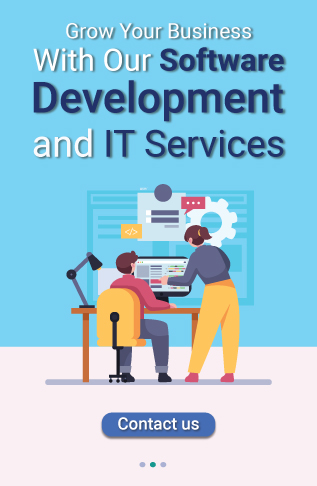Are you planning to build an AI Chatbot for your business? If yes, then you are not alone.
With the rapidly growing world of digitalization, the demand for AI chatbots has increased. Did you know? Gartner says 80% of businesses will use AI chatbots by 2025. It clearly shows how fast AI chatbots are getting adopted across industries.
One of the significant benefits of utilizing AI chatbots is delivering 24/7 instant support. It enhances customer experience and reduces the cost of operations in a business. It is not a theory anymore because giant companies utilize AI chatbots. Due to advanced technologies, customers do not feel they talk with AI bots for their queries, and their human language capabilities are improving daily.
However, many businesses are not aware of the potential of AI chatbots. Do not worry!
So, if you plan to build an AI chatbot to cut down operations costs and automate operations. This guide will help you form the scratch.
In this guide, we will understand everything about AI chatbots, their benefits, a step-by-step guide to building an AI chatbot and the estimated cost for the development.
Table of Contents
ToggleWhat Is an AI Chatbot?
An AI chatbot is a software program that can talk to people. It understands, thinks and responds to people’s queries in a natural human way. It uses Artificial Intelligence, Machine Learning, and Natural Language Processing to process and give human-style relevant responses. Unlike a traditional chatbot, where answers are already fed in the back end, it provides only fixed answers to specific questions. AI chatbots can think, research, and give you proper answers to different questions, even if they are not programmed. These AI chatbots continuously improve their responses over time. And able to handle complex queries, provide personalized responses, and engage users more effectively.
Types of AI Chatbots
There are three main types of AI chatbots:
1. Rule-Based Chatbots
This chatbot follows only predefined rules and responds based on fixed conditions (like “if this, then that”). They can handle simple and direct questions but cannot understand complex or new queries. They are commonly used for FAQs and essential customer support.
2. Retrieval-Based Chatbots
These chatbots use AI and Machine learning chatbot to pick the best response from a pre-written list. They compare the user’s question with stored conversations and choose the closest match. They are more flexible than rule-based chatbots but can only answer within their training data.
3. Generative Chatbots
These chatbots create new responses instead of choosing from a list. They use advanced AI and deep learning to handle open-ended and complex conversations. They are the most intelligent type. And capable of adapting to topics like ChatGPT or Google Bard.
How to Build an AI Chatbot from Scratch?

Here is the step-by-step process to build an AI chatbot:
Step 1. Define Objectives and Use Cases
The first step of building an AI chatbot is to define your chatbot’s purpose. You can ask yourself these questions:
- What problem will the chatbot solve?
- Who will use it (customers, employees or both)?
- What type of queries will it handle?
- Should it support text, voice, or both?
- How much automation is required?
- Will it be used for customer support, sales, healthcare or HR assistance?
By asking these questions, you will get a clear idea about your AI chatbot needs. And you can jump to the next step.
Step 2. Select the Right Type of Chatbot
There are three chatbots i.e.: rule-based, AI-powered or Hybrid. Where rule-based chatbots follow predefined scripts. AI chatbots learn from conversations using NLP. And hybrid chatbots combine both approaches for better interaction.
Step 3. Choose the Technology Stack
Your chatbot’s functionality and efficiency depend on the technology you use. Here is what you will need:
Natural Language Processing (NLP) Tools (For AI Chatbots)
- Google Dialog Flow – Best for conversational AI with easy integration.
- IBM Watson Assistant – Advanced AI with enterprise-level security.
- Amazon Lex – The same NLP used in Alexa, ideal for voice-enabled bots.
AI & Machine Learning Frameworks
- TensorFlow – Best for deep learning-based chatbots.
- PyTorch – Popular for AI model training.
- SpaCy/NLTK – For NLP and text processing.
Programming Languages
- Python – Best for AI-based chatbots (supports NLP & ML).
- Node.js / JavaScript – Best for fast, real-time chatbot applications.
Database & Storage
- PostgreSQL / MySQL – For structured chatbot data.
- MongoDB / Firebase – For NoSQL-based data storage.
Cloud Platforms (Hosting & Deployment)
- AWS AI Services
- Google Cloud AI
- Microsoft Azure AI
Choosing the right technology ensures your chatbot is fast, reliable, and capable of handling multiple interactions simultaneously.
Step 4. Hire an Experienced Software Development Company
Not every business has an in-house developers team. Hiring an experienced software development company is recommended to save time, money and effort. So that you can let the developers build your AI chatbot. And allow you to focus on other important areas of your business. It helps you get the desired results after the AI chatbot development.
Step 5. Design the Conversation Flow
Once you find the best one from the top AI Development Companies. Then design the conversation flow of your AI chatbot. You should plan how the chatbot will interact with users. By mapping out different scenarios. Such as greetings, user queries and responses. Use decision trees for rule-based bots and AI-driven natural conversation models for intelligent chatbots. The chatbot should be able to handle different user intents, provide follow-up questions when necessary. Plus offer alternative responses if it does not understand a query. A well-structured conversation flow improves user experience. Which makes the chatbot more interactive, and ensures it provides meaningful responses.
Step 6. Develop and Train Your Chatbot
Now, it is time to build and train your chatbot. This involves setting up a backend system, integrating NLP models, and feeding it with large datasets to help it understand human language better. Also, continuous learning is essential, so the chatbot must be updated regularly with new data and tested with real-world conversations to enhance accuracy and performance.
Step 7. Test, Deploy and Maintain
Once the chatbot is ready, send it for thorough testing before launching. Test for accuracy, usability, and security. It ensures the chatbot understands queries correctly and provides relevant answers. Once tested, deploy it on the required platforms. Such as websites, messaging apps (WhatsApp, Facebook Messenger) or mobile apps. Also, do not forget about regular maintenance. It ensures the chatbot remains effective, engaging and updated with evolving user needs.
Must-Have AI Chatbot Features
Here are some must-have features that your AI chatbot needs:
- Delivers Accurate Responses: Your chatbot should always provide correct and reliable responses.
- Understands Typos: People make mistakes while typing. An intelligent chatbot should still understand and respond correctly.
- Learns from Users: A great chatbot improves over time by learning from user interactions.
- Easily Transfers to Humans: The chatbot should smoothly connect users to a real agent if things get too complex.
- Supports Multiple Languages: A chatbot should chat with users in different languages, making it useful for everyone.
- Easy Integration (API Support): It should work well with your website, CRM, or other apps to make things run smoothly.
- Summarizes Long Texts: Instead of giving long-winded answers, it should pull out the key points for quick replies.
- Customizable for Businesses: Every business is different! Your chatbot should match your brand’s style and way of talking.
- Helps with Marketing: A chatbot can suggest products, promote deals, and keep customers engaged.
- Ensures Data Security: Your chatbot should protect user data and prevent leaks.
What Tech Stack You Need to Build an AI Chatbot?
Here is a simple breakdown of the key technologies you will need to build an AI chatbot:
1. Natural Language Processing (NLP) Libraries
It helps the chatbot understand and process human language. Popular ones include:
- NLTK, SpaCy (Python)
- Stanford CoreNLP, OpenNLP (Java)
2. Machine Learning Frameworks
It trains your chatbot to get smarter over time. The top choices are:
- TensorFlow, PyTorch, Keras, and Scikit-learn (Python)
3. Conversational AI Platforms
These are pre-built tools used to design chatbots faster:
- Google Dialog Flow, IBM Watson, Microsoft Bot Framework, Amazon Lex, Rasa
4. Backend Technologies
These technologies handle chatbot logic and data processing:
- Node.js
- Python (Django, Flask)
- Java
- Ruby on Rails
5. Frontend Technologies
These technologies build the chatbot’s interface for users:
- HTML/CSS
- JavaScript
- React
- Angular
- Vue.js
Your choice of tech stack depends on your project needs, scalability, and team expertise. Pick wisely.
Benefits of AI Chatbot Development

Here are some key benefits of using an AI chatbot in your business:
24/7 Customer Support
AI chatbot provides round-the-clock assistance. It ensures customers can get help anytime. Even outside business hours. Whether answering FAQs, handling basic inquiries or collecting customer details for follow-up. Chatbots keep your business responsive without requiring human agents to be online 24/7.
Improving Operational Efficiency
Chatbots automate repetitive tasks like appointment scheduling, order tracking and responding to common queries. This reduces manual workload and minimizes human errors. And allows employees to focus on more complex tasks, improving overall efficiency.
Driving Sales and Lead Generation
AI chatbots do not just answer questions. They can also help drive sales. They engage website visitors in real-time, provide product recommendations, guide users through the buying process and even qualify leads by collecting relevant details before passing them to sales teams.
Cost-Efficiency
Hiring and training customer service representatives can be expensive. AI chatbots provide a cost-effective solution. By handling multiple inquiries simultaneously, reducing the need for a large customer support team while improving response times and service quality.
Enhancing Customer Service
AI chatbots improve customer interactions by responding instantly, providing personalized recommendations, and transferring complex queries to human agents when needed. They ensure customers get fast, accurate, and helpful support, boosting satisfaction and loyalty.
Provides Self-Service Options
Many customers prefer solving problems themselves rather than waiting for an agent. AI chatbots simplify self-service by directing users to FAQs, help centre articles, and troubleshooting guides, empowering them to find solutions quickly.
How Much Does It Cost to Build an AI Chatbot?
When it comes to building an AI chatbot, then, it ranges between $5,000 to $150,000. However, the cost can vary based on several factors, including:
- Use case – What tasks the chatbot will handle
- Complexity – Basic bots cost less, while advanced AI requires more investment
- Integrations – Connecting with other software adds to development costs
- Technology – More advanced AI requires more time and resources
- Development Team – In-house teams are costly, while outsourcing offers flexibility and cost savings
Here is the estimated cost breakdown for building an AI chatbot:
| Type of Chatbot | Development Time | Estimated Cost |
| Simple AI Chatbot | Up to 3 months | $5,000 – $20,000 (some may be free) |
| Medium Complexity AI Chatbot | 3 – 6 months | $20,000 – $150,000 |
| Advanced AI Chatbot | 6 – 12+ months | $150,000+ |
Best Practices for AI Custom Chatbot Development
Here are some best practices for building an AI chatbot:
- Focus on User’s Experience: Design your chatbot to be easy to use and helpful for customers. A smooth and natural conversation experience is key.
- Train with Variety of Data: Use user queries from different types of people to help your chatbot understand and respond better.
- Have a Backup Plan: If the chatbot does not understand something, it should give helpful responses or transfer the user to a human agent when needed.
- Protect User Data: Follow privacy laws like GDPR and HIPAA to keep customer information safe and secure.
- Offer a Human Option: Sometimes, users must talk to a real person. Make sure they can easily connect with human support when needed.
- Monitor and Analyze Performance: Track chatbot performance (e.g., customer satisfaction and resolution rates) and optimize it using real data insights.
Real-Life Uses of AI Chatbots
AI chatbots are transforming industries with automation and personalized experience. Here are some key areas:
- Healthcare: It helps patients book appointments, check symptoms, remind them about medicines, and get advice anytime.
- Retail: It suggests products, answers customer questions, and assists with shopping to make the experience smooth.
- Finance: It provides quick answers about accounts, detects fraud, and suggests loans or investments based on user needs.
- Media and Entertainment: It recommends movies, music, and news and sends alerts about favorite content.
- Travel and Tourism: It assists with bookings, suggests travel plans, and helps with trip details.
- E-commerce: It answers product questions, helps with orders, tracks deliveries, and reminds users to complete purchases.
Some Big Companies Already Using AI Chatbots
Several industry giants have already harnessed the power of AI app chatbots. Here are some big names:
- Amazon: Uses AI chatbots for customer support and shopping assistance via Alexa.
- Sephora: Offers beauty tips and product recommendations through chatbots.
- Bank of America: Uses “Erica” to help customers manage finances and get personalized support.
Conclusion
AI chatbots transform how businesses connect with customers. By making communication faster, more personalized and cost-effective. The demand for AI chatbots is increasing. And companies are shifting towards AI chatbots for their custom support operations. However, building an AI chatbot is complex and involves several things to consider. This guide will help you understand everything about AI chatbots, their benefits, the roadmap to build an AI chatbot, and the estimated cost. Now, it is your turn to find an experienced chatbot software development company and let the professionals build your AI chatbot under budget and timeline.
At DreamSoft4U, we have 20+ years of industry experience delivering custom AI chatbots for businesses across industries. Our team will understand each business has unique needs, and they provide tailored solutions with a client-centric approach to produce desired results. Connect with our experts today!
FAQs
Q1. How does an AI chatbot differ from a rule-based chatbot?
A rule-based chatbot follows fixed scripts, while an AI chatbot understands language, learns from interactions, and responds dynamically.
Q2. Can AI chatbots understand and learn from human interactions?
Yes! AI chatbots improve over time by analyzing conversations and adapting to new inputs.
Q3. What industries can benefit from AI chatbots?
Almost every industry! Common ones include customer service, healthcare, eCommerce, finance, education, and travel.
Q4. Which type of chatbot is best for customer support?
AI chatbots are best because they handle complex queries, personalize responses, and improve over time.
Q5. Do I need coding skills to develop an AI chatbot?
No, consider hiring an experienced software development company and let the professionals build an AI chatbot to save time and effort.
Q6. Which programming languages are best for building AI chatbots?
Popular choices include Python, JavaScript, and Java, with frameworks like TensorFlow and spaCy for AI-powered chatbots.
Q7. Are AI chatbots secure?
Yes, but security depends on implementation. Encryption, authentication, and compliance with data privacy laws help keep them safe.























